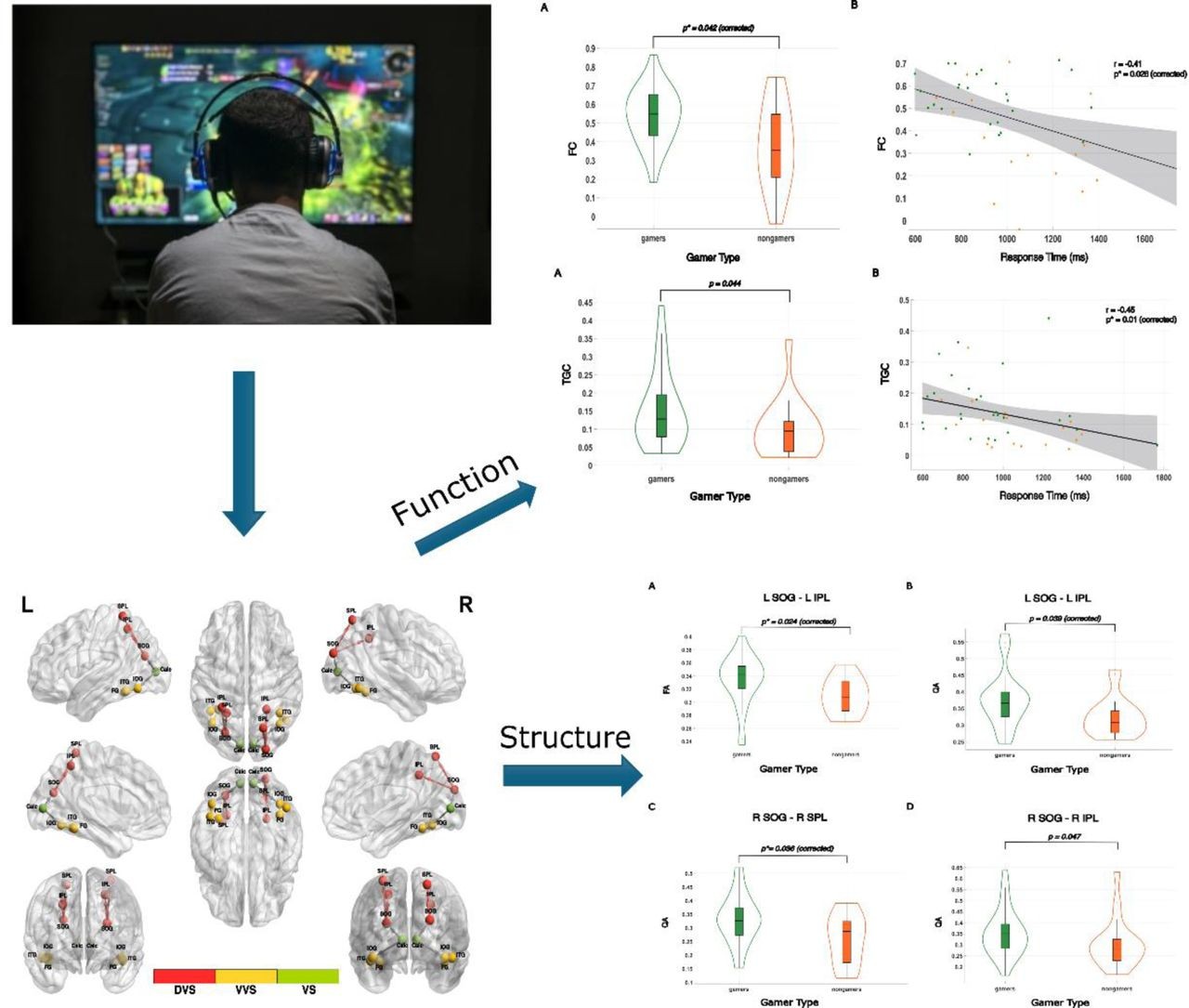
Action video game enthusiasts may be developing enhanced brain connections that help them process visual information more effectively, according to groundbreaking research published in Brain Sciences.
The study, led by researcher Kyle Cahill and his team, discovered that regular action gamers show improved connectivity in specific areas of their brains compared to non-gamers, particularly in regions responsible for processing spatial information and movement.
Scientists examined 47 participants - 28 active gamers who played action games like First-Person Shooters and Battle Royale titles for over 5 hours weekly, and 19 non-gamers who barely touched video games. Using advanced brain imaging techniques, they analyzed two key visual processing pathways: the dorsal stream (which handles spatial awareness) and the ventral stream (which manages object recognition).
The results revealed that gamers displayed stronger neural connections in their dorsal visual stream, specifically between areas called the left superior occipital gyrus and left superior parietal lobule. When tested on visual tasks involving motion detection, gamers with these enhanced connections responded more quickly.
"These brain adaptations appear to support gamers' superior performance in tasks requiring fast and precise visual decision-making," explained the research team.
However, the scientists note that the relationship between gaming and brain connectivity remains unclear. While gaming might strengthen these neural pathways, it's also possible that individuals with naturally stronger connections in these areas are drawn to action gaming.
The findings open new perspectives on how modern entertainment may influence brain development and function. As gaming continues to grow in popularity, understanding its effects on neural architecture becomes increasingly relevant for neuroscience and public health.